Blackening Polypore
A common Polypore which can be found growing in large numbers at the base of Beech and Oak trees from Summer to Autumn.
| Mushroom Type | |
| Common Names | Giant Polypore (EN), Blackening Polypore, Ysgwydd Fawr (CY), Wachlarzowiec Olbrzymi (PL), Óriás Bokrosgomba (HU) |
| Scientific Name | Meripilus giganteus |
| Season Start | Aug |
| Season End | Nov |
| Average Mushroom height (CM) | 0 |
| Average Cap width (CM) | 80 |
Fruiting Body
This mushroom grows in large rosette of overlapping flat brackets. The cap is radially coloured light and darker brown and is covered in very fine brown scales.
The cap can vary in colour and shape depending where and when it is growing making identification occasionally difficult.
Habitat
Growing from the base or roots of Beech and Oak but can grow with other deciduous trees.
Possible Confusion
Hen of the Woods (Grifola frondosa), pictured, which is edible but does not bruise black, has more of a grey colour and is usually more frondose.
Black-staining Polypore (Meripilus sumstinei) looks rather identical. It is also called Giant Polypore, but it is a North American species which is not native to Europe.
Spore Print
White. Ovoid, ellipsoid.
Taste / Smell
Slightly sour but young specimens or soft edges of more mature specimens can be very pleasant and Agaric like. Should be cooked before consumption.
Frequency
Common.
Other Facts
Must be cooked before consumption but can still cause gastric upsets in a small amount of people.



 (45 votes, average: 3.67 out of 5)
(45 votes, average: 3.67 out of 5)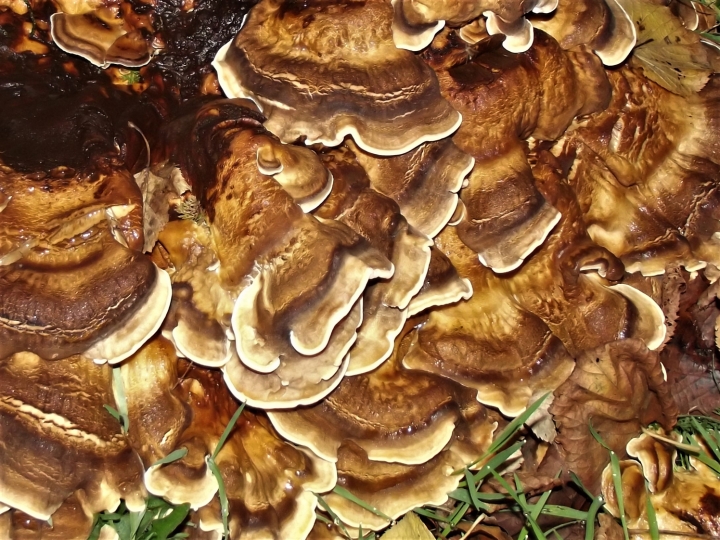















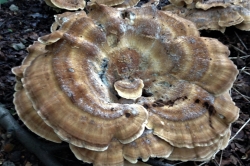
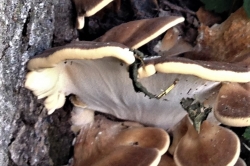
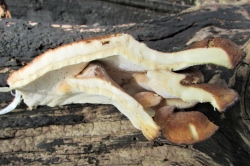
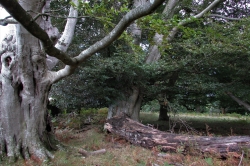
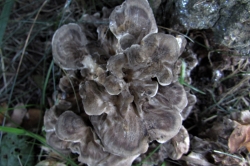






COMMENTS